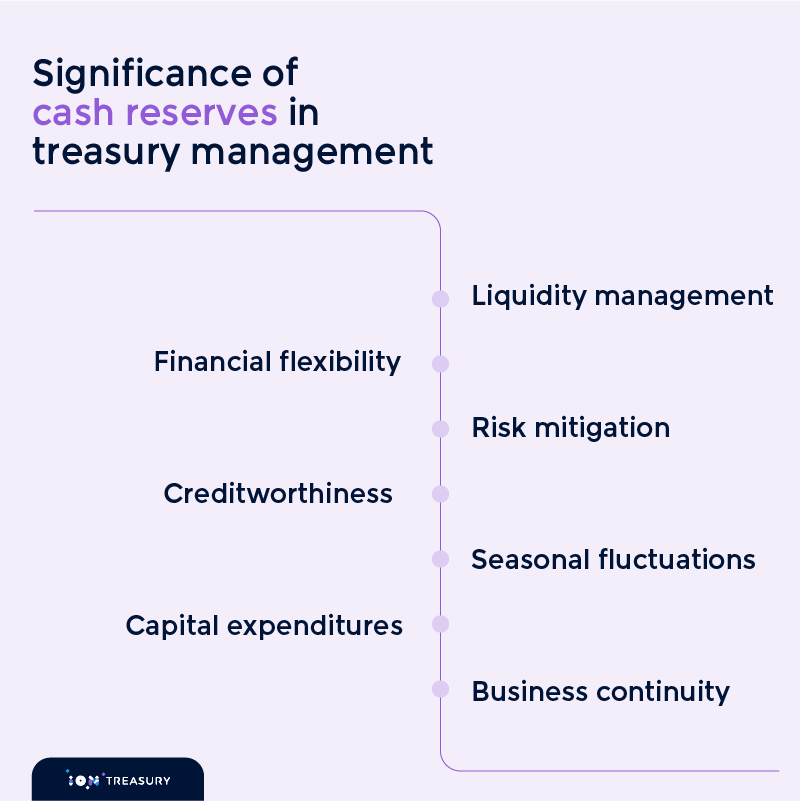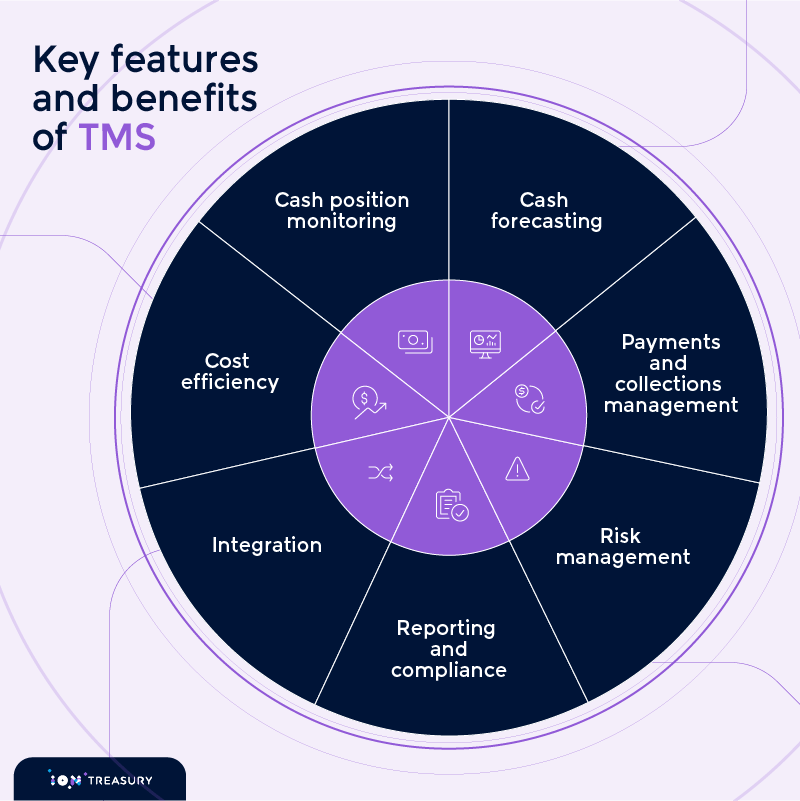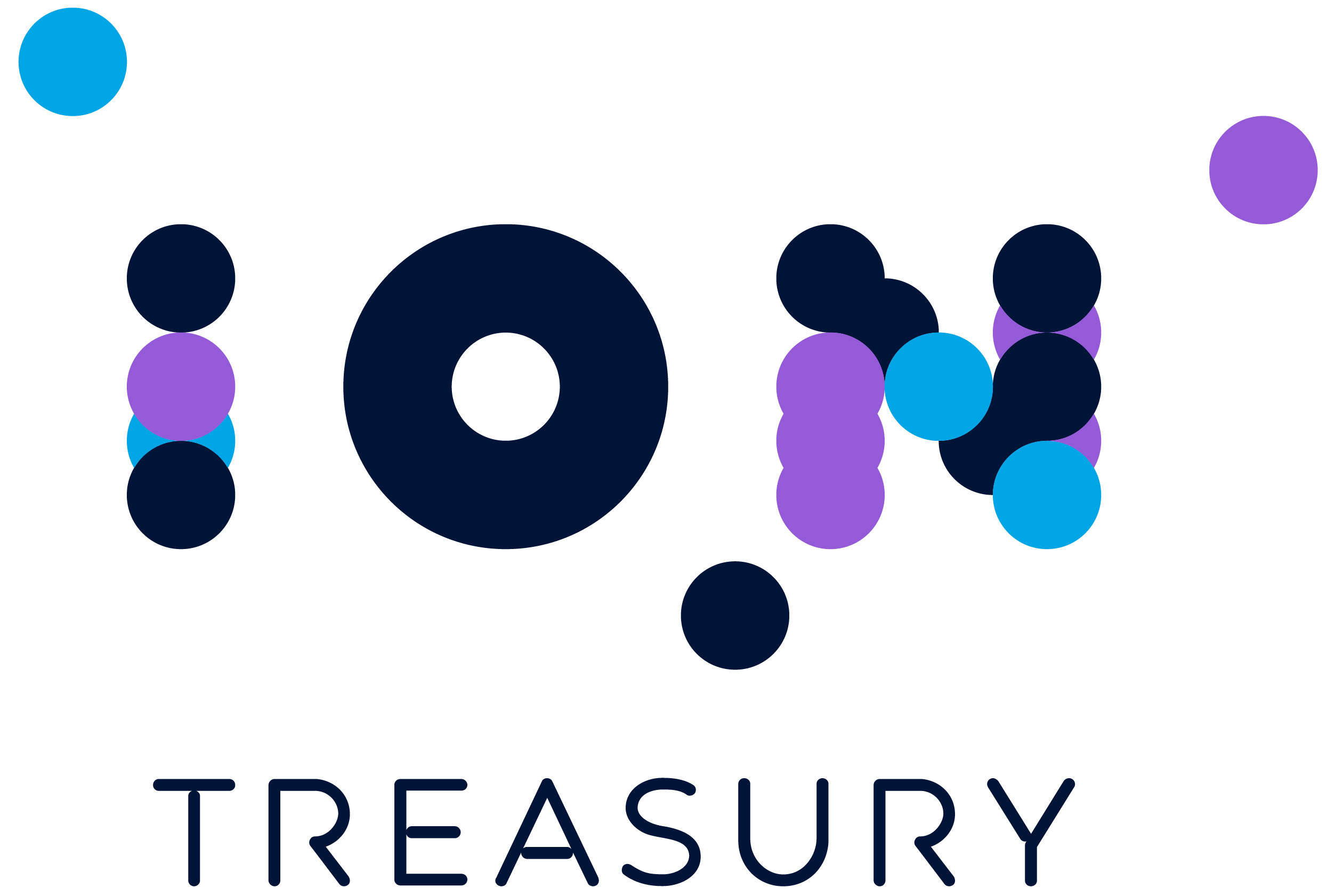The art of effective cash flow management
Effective cash management is crucial for any business. It is the driving force that keeps the business alive and adaptable in the continuously evolving business world. Whether a startup or a multinational corporation, managing cash flow effectively can be the difference between success and failure. According to SCORE and a study by a US bank, 82% of business failures are due to poor cash management. Therefore, it is essential to manage cash flow effectively to ensure the success and sustainability of any business. Effective cash management can determine whether an enterprise can seize opportunities, navigate through turbulent waters, or get stranded in the middle of the ocean with financial difficulties.
In this blog, we’ll cover strategies and techniques to help you optimize your cash flow, whether you’re an entrepreneur or a seasoned executive.
The basics of cash flow forecasting
Cash flow forecasting is a crucial financial management process that predicts a business’s expected cash inflows and outflows over a specific period. This projection provides a detailed picture of how funds will move in and out of your company.
- Purpose – Cash flow forecasting is used to determine whether a company has enough liquidity to meet its financial obligations required to avoid running into cash shortages that could lead to financial distress.
- Timeframe – Forecasts can cover various timeframes, from short-term (days or weeks) to long-term (months or years). The choice of timeframe depends on a business’s needs and objectives.
5 techniques for effective cash flow forecasting
This section will cover various effective cash flow forecasting techniques, helping businesses maintain financial stability and confidently make strategic decisions.
- Historical Cash Flow Analysis– Review your company’s historical cash flows. Review past financial statements and cash flow records to identify patterns and trends. Reviewing records serves as the basis for understanding the company’s financial condition and cash flow.
- Revenue forecasting– Project future revenue streams by analyzing market trends, historical sales data, and customer insights. Collaborate with sales teams to forecast sales volumes and pricing strategies accurately. Incorporate various scenarios into your revenue forecasts to anticipate fluctuations and make informed decisions about cash flow management.
- Expense forecasting– Estimate your future expenses by categorizing them into fixed and variable costs. Fixed costs like rent and salaries are relatively stable and predictable. Variable prices, like utilities and raw materials, can fluctuate. Review your contracts and vendor agreements, and factor in potential cost increases or reductions.
- Accounts receivable and accounts payable– Analyze your accounts receivable and accounts payable aging reports. Determine when to expect customer payments and when your bills are due. Efficiently managing these cycles can significantly impact your cash flow.
- Working capital management– Optimize your capital management to improve your cash flow position. This includes managing inventory levels, negotiating favorable payment terms with suppliers, and accelerating the collection of accounts receivable.
KEY TAKEAWAYS
- Effective cash management is crucial for business survival and adaptability in the ever-changing market.
- 82% of business failures stem from inadequate cash management, underlining its pivotal role.
- Utilize historical analysis, sales, revenue, and expense forecasting, along with accounts receivable and payable analysis, and working capital management for effective cash flow projections.
Liquidity management
Liquidity management is a vital aspect of financial planning for businesses of all sizes. Access to sufficient cash to meet short-term obligations, cover unexpected expenses, and seize growth opportunities is essential for financial stability and sustainability. In this section, we will explore a range of liquidity management strategies that businesses can employ to ensure they maintain adequate cash reserves and optimize their financial position.
- Cash flow forecasting– Effective liquidity management requires analyzing historical cash flow data, projecting future cash flows, and considering potential scenarios to anticipate fluctuations. Regularly update and revise your forecasts to ensure they remain relevant.
- Working capital optimization– Managing your current assets and liabilities is essential to optimize your working capital. This can be achieved by implementing strategies such as reducing excess inventory, negotiating extended payment terms with suppliers, and accelerating the collection of accounts receivable. These actions allow you to free up cash for other business needs and improve your overall financial position.
- Cash reserves– It is always essential to keep a sufficient reserve to cover unforeseen expenses or short-term liquidity needs. A good rule of thumb is to have enough cash to cover at least three to six months’ operating expenses. This reserve acts as a financial safety net and helps ensure you are prepared for any unexpected financial circumstances. Regularly reviewing your expenses and adjusting your reserves as necessary is a wise practice.
- Access to credit facilities– Establish and maintain credit lines or credit facilities with banks or financial institutions. These can serve as a source of additional liquidity when needed. Ensure that you have this option in place before a financial crisis occurs.
- Cash flow improvement– Seek opportunities to improve cash flow within your organization. This might include implementing cost-cutting measures, renegotiating contracts to lower expenses, or finding innovative ways to increase revenue.
Liquidity planning vs. short-term cash flow forecasting
| Aspect | Liquidity Planning | Short-term cash flow forecasting |
| Objective | Ensures the organization has sufficient cash reserves to meet the financial obligations and unexpected expenses. | Predict short-term cash inflows and outflows to optimize cash management and liquidity. |
| Time horizon | Typically focuses on the organization’s liquidity needs over a medium to long-term period, often spanning months to a year. | Concentrates on predicting cash flows over a short-term period, usually covering days, weeks, or a few months ahead. |
| Data sources | Integrates data from various sources, including historical cash flows, market trends, operational forecasts, and liquidity metrics. | Relies on real-time and historical financial data, market indicators, customer payment behavior, and cash management records. |
| Frequency of analysis | Often conducted on a periodic basis, such as quarterly or annually, to assess overall liquidity requirements and develop strategic plans. | Conducted more frequently, usually on a daily, weekly, or monthly basis, to provide real-time insights into cash flow dynamics. |
| Focus | Emphasizes optimizing cash reserves, managing working capital, and mitigating liquidity risks over the medium to long term. | Focuses on predicting short-term cash flow patterns, identifying funding gaps, and optimizing cash utilization for immediate needs. |
| Strategic decision-making | Informs strategic decisions related to capital allocation, investment strategies, debt management, and overall financial planning. | Facilitates tactical decisions, such as managing daily cash balances, optimizing payment schedules, and prioritizing cash disbursements. |
| Risk management | Addresses long-term liquidity risks, market volatility, credit exposure, and regulatory compliance to safeguard financial stability. | Identifies short-term liquidity risks, customer payment delays, unexpected expenses, and operational disruptions to ensure cash availability. |
| Integration with TMS features | Utilizes TMS features for cash position monitoring, working capital optimization, liquidity forecasting, and risk management strategies. | Leverages TMS capabilities for real-time data analysis, scenario modeling, cash flow visualization, and automated cash management processes. |
Cash conversion cycle optimization: maximizing efficiency and liquidity
The Cash Conversion Cycle (CCC) is an important financial metric that measures the time a company takes to convert its inventory and other resources into cash flows from sales. It is crucial for businesses to optimize the CCC to improve their efficiency, liquidity, and overall financial performance. This section will explain what the Cash Conversion Cycle is and provide strategies to optimize it.
The CCC is composed of three main components:
- Days Inventory Outstanding (DIO): This metric represents the average number of days it takes for a company to sell its inventory. A lower DIO indicates a faster turnover of inventory, which can free up cash.
- Days Sales Outstanding (DSO): DSO measures the average number of days it takes for a company to collect payment from its customers after making a sale. A shorter DSO results in quicker access to cash.
- Days Payable Outstanding (DPO): DPO reflects the average number of days a company takes to pay its suppliers. A longer DPO allows a company to hold onto its cash for a more extended period before paying its bills.
KEY TAKEAWAYS
- Adequate cash reserves are crucial for meeting short-term obligations and seizing growth opportunities, emphasizing the importance of effective liquidity management.
- Utilize cash flow forecasting, working capital optimization, and maintaining adequate cash reserves to ensure financial stability and cover unforeseen expenses.
- Establish credit facilities for additional liquidity and seek opportunities to enhance cash flow through cost-cutting measures and revenue optimization.
5 ways to optimize the cash conversion cycle
- Streamline inventory management– Adopt Just-in-Time (JIT) inventory management to reduce excess inventory. Identify and prioritize fast-moving products to optimize stock levels. Apply technology and data analytics to enhance inventory forecasting.
- Improve sales and collections– Implement efficient invoicing and payment collection processes. Regularly assess and analyze customer creditworthiness to mitigate late payments.
- Negotiate favorable payment terms– Negotiate longer payment terms with suppliers while maintaining good relationships.
- Cash flow management– Establish a robust system to monitor cash inflows and outflows. Set up precise and disciplined cash flow forecasting to identify potential shortfalls or surpluses.
- Automation and technology– Implement accounting and ERP systems that streamline financial processes. Use automation for inventory tracking, invoicing, and collections to minimize human error and improve efficiency.
The importance of cash reserves in treasury management
Cash reserves are a critical component of treasury management, and they play a central role in ensuring a company’s financial stability and resilience. Effective treasury management involves maintaining an optimal level of cash reserves to meet short-term obligations, seize opportunities, and weather unexpected economic challenges. Significance of cash reserves in treasury management:
- Liquidity management– Cash reserves refer to the amount of money a company has set aside to cover its short-term financial obligations such as salaries, vendor payments, and operational expenses. An adequate amount of cash reserves enables a company to avoid liquidity crises and ensures that its day-to-day operations run smoothly without disruptions.
- Financial flexibility– Cash reserves offer flexibility, allowing companies to respond swiftly to market changes, unforeseen expenses, or investment opportunities. With a substantial cash reserve, businesses can capitalize on favorable market conditions, negotiate favorable terms with suppliers, or make strategic acquisitions without incurring debt.
- Risk mitigation– In a business environment, uncertainty is a constant factor, and unexpected events can severely affect cash flow. To mitigate such risks, companies maintain cash reserves, enabling them to manage unforeseen expenses, navigate economic downturns, and handle unexpected crises without resorting to loans or selling assets in a hurry.
- Creditworthiness– Maintaining adequate cash reserves enhances a company’s creditworthiness. Lenders and investors view a strong cash position positively because it demonstrates the ability to meet financial obligations. This can result in more favorable borrowing terms, lower interest rates, and increased investor confidence.
- Seasonal fluctuations– Cash reserves are crucial for businesses with seasonal revenue or expense fluctuations. They act as a buffer during low cash flow periods, ensuring financial obligations are met when payments are temporarily reduced.
- Capital expenditures– Maintaining appropriate levels of cash reserves is essential for businesses to finance capital expenditures and ensure financial stability. By using their cash reserves, businesses can invest in new facilities, equipment, or technology without incurring additional debt, which can help them remain competitive and support long-term growth. These investments can provide companies with the necessary infrastructure and resources to improve operational efficiency, increase productivity, and drive innovation, ultimately leading to improved profitability and financial success.
- Business continuity– In the event of unforeseen disruptions, like natural disasters or supply chain interruptions, cash reserves allow a business to continue operations, maintain business continuity, and minimize downtime while addressing and recovering from the crisis.

Role of technology in cash flow management
Digital transformation in treasury operations involves the comprehensive integration of technology to streamline processes, enhance efficiency, and ensure better cash flow management. This shift is motivated by several factors:
- Real-time insights: With the aid of modern technology, treasurers can access real-time data on cash positions, transactions, and liquidity. This enables them to make informed decisions promptly and with greater accuracy.
- Risk mitigation: Technology allows for the automated monitoring of various financial risks, including market risk, credit risk, and liquidity risk. It ensures that treasurers can swiftly identify and address potential issues, reducing the chances of financial crises.
- Improved compliance: Digital tools help treasurers comply with financial regulations and standards. Automation ensures accurate reporting and audit trails, reducing the risk of non-compliance.
- Cost reduction: Automating routine treasury tasks leads to significant cost savings. This allows treasury departments to allocate resources more efficiently and focus on strategic activities.
Treasury Management Systems (TMS)
One of the critical enablers of technology-driven treasury operations is the Treasury Management System (TMS). A TMS is a specialized software solution designed to manage a wide range of treasury-related activities, and its impact on cash flow management is substantial. Here are some key features and benefits of TMS:
- Cash position monitoring: TMS provides treasurers with a real-time overview of their organization’s cash positions across various bank accounts and currencies, enabling them to optimize liquidity and cash flow.
- Cash forecasting: TMS applies historical data, statistical models, and AI algorithms, including machine learning, to provide accurate cash flow forecasts. By analyzing patterns and trends in historical data and incorporating advanced predictive analytics, machine learning algorithms enhance the accuracy of cash flow forecasts. This helps treasurers plan for short and long-term cash needs with greater precision and confidence.
- Payments and collections management: Automating payment initiation and collection processes is made possible with TMS, which ultimately helps to minimize the risk of errors and speed up the flow of funds.
- Risk management: The TMS helps treasurers to effectively monitor and manage financial risks related to market volatility and credit exposure, enabling them to hedge against those risks.
- Reporting and compliance: TMS generates comprehensive reports, facilitating financial reporting and compliance with regulatory requirements.
- Integration: TMS can integrate with other financial systems, streamlining data flow and minimizing manual data entry.
- Cost efficiency: By automating various tasks, TMS reduces operational costs and allows treasury departments to operate more efficiently.

Managing cash flow effectively is essential for any business regardless of size or industry. It can determine whether a business thrives or struggles to survive. Poor cash management is responsible for a staggering 82% of business failures. This highlights the critical importance of financial management in terms of cash flow.
By adopting effective techniques and embracing technology like Treasury Management Systems, businesses can achieve better control over their cash flow. This enables them to make informed decisions, mitigate risks, and maintain a strong financial position. In today’s world, where change is constant and financial stability is crucial, mastering cash flow management is a vital aspect of long-term success. It empowers businesses to seize opportunities, overcome challenges, and ensure their financial stability in any economic environment. Therefore, take control of your cash flow, and you will be better equipped to steer your business towards a prosperous and resilient future.

Don't miss out
Subscribe to our blog to stay up to date on industry trends and technology innovations.

